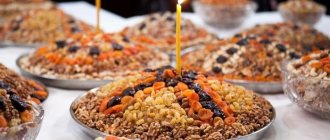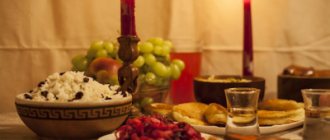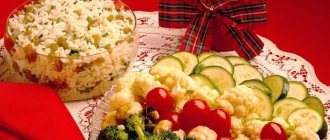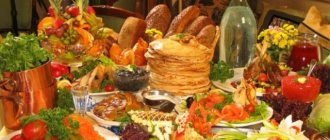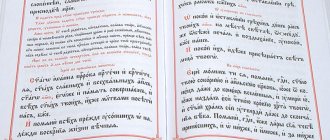Since ancient times, close people of the deceased gathered together on certain days in order to ask the Almighty for the peace of the soul of the deceased through joint prayers. After visiting the cemetery, relatives held a funeral dinner. These rituals have survived to this day: funeral services are held on the third day of a person’s death, as well as on the ninth and fortieth days. Unfortunately, today they try to make funeral dinners rich and luxurious, forgetting about ancient traditions and rituals. To really help the soul that goes to God, it is necessary to properly organize the appropriate meal.
One of the main dishes on the table these days is funeral kutia, or kolivo. It is tried first, and it personifies the immortality of the dead, faith in resurrection and eternal life.
What is kutya?
Kolivo, or kutia, is a dish of cooked wheat grains or boiled rice with the addition of honey and raisins, which must first be blessed during a memorial service in the church. At the same time, the grains symbolize resurrection. To get shoots, they must end up in the ground and decay. Likewise, the human body will be consigned to the earth so that it decays, and then resurrects and becomes incorruptible for further life. Raisins and honey here represent the spiritual benefits of eternal life. Therefore, kolivo is the personification of the confidence of living people in the immortality of those who have died. This dish is prepared not only for funerals, but also for Christmas and other Orthodox holidays. The main thing here is that the grain that is included in the food is whole. Moreover, it can be anything: rice, oatmeal, wheat, pearl barley, and so on.
Funeral kutia - meaning, usefulness and recipe
The taste of kutya is familiar to many from childhood and is associated with the winter Christmas holidays, when the house is still filled with the aroma of pine needles and tangerines, and the family gathers at the table in anticipation of a festive dinner.
However, kutia is used not only in Christmas rituals, but also at funerals.
The dish is considered traditionally Slavic. This is a porridge made from various grains, mainly wheat and rice. Pearl barley, oatmeal, barley or peas are also used. Various ingredients are added to them, but the main ones are honey, nuts and ground poppy seeds. You can complement the dish with raisins and any suitable dried fruits; dates, dried apricots, and prunes are best.
Kutia is very similar to another dish that is used in rituals; it is called kolivo, it is often confused with kutya, although it is not as sweet. The name “kutia” is of Greek origin, meaning grain (in Greek – cocco).
A few words about how to cook kutya
This dish should always be sweet, so it often includes honey, raisins, poppy seeds, nuts, candied fruits, dried fruits, etc. It is correct to cook it using dried fruit uzvar. For cooking, use a cauldron, ceramic saucepan or any other utensil with thick walls. Kutya is served only cooled, and it should be decorated with candied fruits, marmalade, candies or nuts. The food is not prepared in large quantities, because if it sits for a long time, the honey will begin to ferment. And besides, you can’t throw it away - they eat kutya until it’s gone.
Kolivo must be consecrated in the church (you can carry out this procedure at home yourself by sprinkling the dish with sacred water). Before using it, read a prayer.
Traditional funeral meal
The tradition of eating kutya carries a deep sacred meaning: the Church Charter “Typikon” connects the meal during the wake with the Divine service. Turning to Christian ideas, it is worth noting that holding a memorial ceremony is associated not only with the desire of loved ones to pay tribute to the memory of the deceased, but also serves as a reminder of the Creator and the world order he established. The ceremony is based on the idea that there are two sides of life: earthly and divine. Moreover, the first is fleeting, and the second is eternal, and it is she who is given the leading role. Holding a wake for the deceased serves as a reminder to all his relatives of the principles of the universe, which are the basis of the Orthodox faith. The loss of a loved one and coming face to face with death allows a person to think and rethink many important things, and kutya becomes one of the tools of “reminder” of the laws of all things and an important symbolic node.
Temples in Moscow cemeteries
Funeral kutia from rice: classic recipe
Ingredients: half a glass of rice, two glasses of water, three tablespoons of honey, sixty grams of walnuts, one hundred grams of candied fruits, nuts, prunes, raisins.
Preparation
Rice cereals are washed several times and boiled in water. Candied fruits, raisins and prunes are soaked in boiling water for one hour. Roast the walnuts for one minute in a frying pan. The poppy seed is washed, placed on a sieve to allow the water to drain, then it is placed in a mortar and crushed until white milk appears. Dried fruits and candied fruits are cut into small cubes to make it easier to eat. The finished rice porridge is rinsed with cold water and placed on a sieve so that the grains do not stick together, then the cooled rice is mixed with honey, poppy seeds and half of the nuts, dried fruits and candied fruits, the rest is decorated with the finished dish, laid out in a slide.
Option 5: Rice kutia with raisins and dried fruits
There is a belief that the more beautiful and “richer” the kutia is on the Christmas table, the more successful and happier the year will be for the family. Those who listen to signs are recommended to prepare delicious porridge according to the following recipe.
Ingredients:
- 250 gr. rice;
- 50-60 gr. butter;
- 100g dried apricots, prunes, dried cherries;
- 100 gr. dried pears and apples;
- 100 gr. poppy;
- 100 gr. peeled walnuts;
- 100-120 gr. raisins;
- 50-60 gr. honey;
- two tablespoons of sugar.
How to cook
Pour poppy seeds into a bowl, pour hot water into it and soak for 40 minutes. After this, strain the poppy seeds through cheesecloth and blend in a blender until a whitish tint appears.
Rinse the rice in several waters so that the porridge is not sticky. Pour the cereal into a frying pan without oil, heat over low heat, stirring constantly until the rice acquires a golden hue.
Add a piece of butter to the rice, add sugar in small portions and stir. Fry until the rice turns golden brown.
Place the fried rice in a saucepan along with the raisins. Add dried fruits along with the water in which they were boiled. When the liquid begins to boil, reduce the heat to low and continue cooking for another 15-17 minutes, stirring occasionally.
Place honey in a glass with a small amount of warm water, stir well until it completely dissolves. Mix with poppy seeds and nut pieces. Slowly and gently stir the nut-poppy mixture into the rice.
Before treating guests, kutya needs to be cooled. Before serving, decorate the top with nuts and raisins. Bon appetit!
Rice colivo
Since rice kutia is most often prepared for funerals, you can find a huge number of recipes for its preparation. We'll look at another one.
Ingredients: four spoons of poppy seeds, fifty grams of light and dark raisins, three spoons of honey, one glass of long grain rice, fifty grams of dried cranberries, one glass of walnuts, one spoon of olive oil.
Preparation
Before preparing the funeral kutya, the rice is washed seven times, water is poured at the rate of one to two, a pinch of salt and olive oil are added and cooked under a closed lid until tender over low heat. The finished porridge is cooled. Meanwhile, boil water. The raisins are sorted, washed and poured with boiling water. The cranberries are sorted, washed and placed on a napkin. The nuts are poured into a hot frying pan (can be heated in the microwave). The poppy seeds are ground with one spoon of sugar in a mortar. Prepared rice is seasoned with honey, nuts, cranberries, and poppy seeds. The finished dish is placed in a heap on a dish and decorated at your discretion, using nuts, cranberries, and so on.
How to arrange a funeral table
Traditional dishes of the funeral meal are kutia and milk jelly. If the memorial day falls during fasting, then the table should be fast (the milk in the jelly can then be replaced with “milk” made from poppy seeds or almonds - for this, the poppy seeds or almonds must be ground and poured with boiling water).
How to make cranberry jelly
200-400 g cranberries, 6-8 tbsp. spoons of sugar, 4-6 tbsp. spoons of potato starch.
Sort the cranberries, rinse, rub through a sieve, squeeze out the juice. Pour the marc with five times the amount of hot water, bring to a boil, strain. Cool part of the broth and dilute potato starch in it. Put sugar in the remaining broth, boil it, then pour in the diluted starch, squeezed juice and bring to a boil. Pour into a dish, sprinkle with powdered sugar to prevent a film from forming, and cool.
How to cook oatmeal jelly
400 g oatmeal or rolled oats, yeast.
Dilute oatmeal or rolled oats with cold water (ratio 1:1), add yeast or a piece of black bread, and let it sour (12-24 hours) in a warm place. Drain off excess water, bring the remaining mixture to a boil, and the jelly is ready. When hot, jelly is eaten with vegetable oil; when cooled, it is cut and eaten with jam and fried onions.
Rice kutia with candied fruits
This dish will be tastier if you add more poppy seeds and nuts to it.
Ingredients: fifty grams of walnuts, fifty grams of cashews, fifty grams of almonds, one glass of rice, fifty grams of poppy seeds, sugar to taste, one hundred grams of candied fruits.
Preparation
Before you cook the funeral kutia, you need to prepare all the ingredients. To do this, wash the rice thoroughly and pour cold water (take two glasses of liquid for one glass of cereal), add salt to taste and cook until tender. You can add a little vegetable oil to prevent the grains from sticking together. Next, the rice is cooled so that it does not dry out, but holds its shape, remaining soft and tender. Then they take the poppy seed, pour boiling water over it and leave it to steep for one hour. After time, the water is completely drained, the poppy seeds are mixed with honey and candied fruits, and prepared rice is added.
Pour boiling water over the almonds for ten minutes, after which the skin is removed. Cashews and walnuts are dried in a microwave oven or in a frying pan, and then placed on kutya.
What are the benefits of funeral kutia?
Kutia is not only a very tasty, but also a healthy dish. Its basis is wheat grains, rich in carbohydrates and containing a lot of useful substances. These are B vitamins, which strengthen the nervous system, and fiber, which is necessary for removing toxins from the body and preventing the conversion of carbohydrates into fat.
Honey is known for its bactericidal, antiviral and antifungal properties. It gives strength, increases performance and improves vitality.
Walnuts contain iodine and help fight thyroid diseases.
Raisins are important for the presence of potassium, which has a beneficial effect on the functioning of the heart and kidneys, strengthens the nervous system and acts as a good sedative.
Poppy improves digestion and is a source of carbohydrates and healthy unsaturated fatty acids.
The ingredients of kutya, especially its dressings, are tasty, healthy and nutritious
Kutya in a slow cooker
The multicooker cooks unpolished cereals so that they are in no way different from those cooked in a cauldron. In addition, this device significantly saves the cook’s time and effort. Funeral kutia, the recipe for which we will now look at, will turn out crumbly and very tasty.
Ingredients: two multi-cups of barley, five multi-glasses of water, one pinch of salt, one hundred grams of almonds, half a glass of poppy seeds, half a glass of pitted raisins, two spoons of sugar.
Preparation
In the evening, pearl barley is soaked. The next day, it is washed, placed in a multicooker bowl and water and salt are added. Close the lid and turn on the “Rice” or “Buckwheat” mode, cook until done, then transfer to another bowl and leave to cool.
Meanwhile, boil water, pour it over the poppy seeds and leave for one hour. After time, drain the water, add sugar and grind the poppy seeds well in a mortar. The raisins are soaked in water for half an hour, then they are washed and poured onto a napkin so that excess moisture is absorbed into it. Nuts are fried in a frying pan. The porridge is mixed with honey, raisins and poppy seeds, and a small part of nuts. The rest of the almonds are used to decorate the kolivo, which is poured into a heap.
Symbols of Kutya
The main ingredient of kutya, regardless of the recipe, is grains. Returning to life every year and bearing fruit, these crops symbolize resurrection among many peoples. In the context of human death, this symbol can be interpreted as a transition from earthly life to heavenly life. At the same time, honey and sweet fruits that make up kutya are a kind of reference to the blessings of heaven.
According to church customs, it is customary to commemorate the deceased with kutya not only among family and friends, but also to bring it to the temple. The food is left on a special pedestal, the so-called “kanun”, where any parishioner can taste the treat and thereby honor the memory of the deceased.
Kolivo from pearl barley
Funeral kutya from such cereals turns out crumbly. To do this, you need to cook it in a cauldron.
Ingredients: one glass of pearl barley, one hundred grams of poppy seeds, one hundred grams of walnuts, one hundred grams of raisins, one hundred grams of dried apricots, two spoons of honey.
Preparation
Before you start preparing this dish, you need to soak the cereal in water in advance and leave it to steep overnight. In this case, there should be twice as much liquid as pearl barley. In the morning, it is washed, filled with water, salt is added and simmered over medium heat until tender. One hour is allotted for this, since the swollen cereal cooks quite quickly. If you need to get crumbly porridge, then at the beginning of its cooking add one spoon of vegetable oil. This is done so that the grains do not stick together, but remain intact even after the koliva has cooled.
Next, the funeral kutia, the recipe for which we are now considering, is prepared as follows: boil the poppy seeds for ten minutes, then strain off the water using a sieve or gauze. Grind it with a rolling pin until white milk forms. Raisins and dried apricots are sorted, doused with boiling water and washed. The dried apricot is then cut into small pieces. Dried fruits are pre-soaked in boiling water for one hour. So, poppy seeds and nuts are mixed, added to barley along with dried apricots and raisins, honey. The finished dish is decorated with dried fruits and served.
Option 4: Rice kutia with raisins and nuts
Rice kutia with raisins will become a real delicacy if you add several types of nuts to it. This is a more expensive option, but such a treat will look beautiful on the holiday table.
Ingredients:
- 300-350 gr. rice;
- 100 gr. honey;
- 250 gr. walnuts, almonds and hazelnuts;
- 170-180 gr. raisins;
- 170-180 gr. edible poppy.
Step by step recipe
Rinse the rice groats thoroughly in running water so that the mealiness comes off and the porridge turns out crumbly. Pour into a saucepan, add plenty of water and boil until tender. Drain off the remaining liquid.
Place the nuts in a frying pan and fry over low heat for several minutes, stirring occasionally. Peel off the husks, then break them into smaller pieces using your hands or a knife.
Pour poppy seeds into a cup and add hot water. Soak for half an hour. Drain the water and grind the poppy seeds through a meat grinder or blender a couple of times.
Place the hot rice into a nice deep cup, add poppy seeds, raisins and nuts, and mix well.
Place honey in a glass, pour a spoonful of warm water and shake well. Add to kutya and mix again.
Before serving, cool the porridge, shape the top of the kutya into a mound and decorate it with whole nuts.
Funeral kolivo made from wheat
Ingredients: one glass of wheat, one hundred grams of raisins, three tablespoons of honey, fifty grams of poppy seeds, one hundred grams of walnuts.
Preparation
Before cooking the funeral kutia, the wheat is washed, poured with cold water and left overnight to infuse. The next day, the grain is washed well, poured with water (take three glasses for one glass of wheat), put on low heat and boil. When the liquid boils, add salt and cook the porridge until tender over low heat. If the wheat is polished, it cooks much faster.
We remember that funeral kutia should be sweet. All dried fruits, previously soaked in water, along with nuts calcined in a frying pan, are chopped and mixed. The poppy seeds are soaked in boiling water, dried and pounded in a mortar until white milk forms, then it is added to the nuts along with honey and prepared cereal. Mix everything well and place it on a large plate in a heap, garnishing with nuts and dried fruits if desired.
Cooking options
Rice with raisins for funerals is prepared in different ways. You can add other ingredients to this dish, which allows you to use the porridge not only in connection with the ritual.
Kutya in a slow cooker
Using a multicooker you can cook almost any dish. Rice porridge is no exception.
For preparation use:
- water – 4 glasses;
- raisins – 300 g;
- cereal – 2 cups;
- honey – 2 tbsp. l.
The cereal should be rinsed well with cold water and placed in a multicooker bowl. Water is added to it. If the device has a “Rice” mode, then you should cook using it. But the use of the “Porridge” mode is allowed.
You should also wash the raisins and pour boiling water over them for a few minutes. Honey is diluted in warm water or melted in a water bath. When the rice is ready, combine it with raisins and add water and honey. Mix the ingredients and transfer the dish to plates.
Kutia with honey, raisins and nuts
Ingredients:
- cereal – 1 cup;
- honey – 150 g;
- water – 2 glasses;
- raisins – 1 glass;
- nuts – 0.5 cups.
The washed rice is poured with water and porridge is cooked from it. While the cereal is cooking, nuts and dried fruits are immersed in boiling water and left for 30 minutes. After this, drain the water and place the ingredients on a paper towel to dry.
Next, you need to chop them with a knife or using a blender. The resulting mixture is combined with cooked rice. The last ingredient is honey. If it is liquid, you can immediately add it to the porridge. The candied product should be melted in a water bath. The ingredients are mixed, after which the porridge is served.
Kutya with candied fruits
One of the additional ingredients can be candied fruits.
Products:
- cereal – 0.5 cups;
- raisins – 100 g;
- honey – 3 tbsp. l.;
- candied fruits – 100 g;
- nuts – 100 g;
- sugar – 2 tbsp. l.
They begin work by preparing dried fruits. Place dried fruits in a bowl and fill with cold water. It should stand for 20 minutes, after which the liquid is drained. Pour a glass of water into a bowl of raisins and place the container on the stove.
The products need to be boiled a little (about 5 minutes). Honey is melted in a water bath or dissolved in warm water. Candied fruits are cut into small pieces. Having prepared additional ingredients, start cooking the rice.
It is washed well, then filled with water and placed on the stove. It is advisable to cook it over low heat - this way the product will turn out crumbly. Shortly before the cereal is ready, add dried fruits to the porridge and pour honey into it. After stirring, the heat can be turned off.
Kutya with almonds and dried apricots
There are cooking options in which some ingredients are replaced with others. Instead of raisins, you can add dried apricots to funeral porridge.
Required Products:
- cereal – 150 g;
- dried apricots – 100 g;
- sugar;
- poppy – 100 g;
- almonds – 100 g.
The cereal is washed, placed in a saucepan and cold water is poured into it. After boiling, add sugar to the cereal and leave to cook until tender. This will take about 20 minutes. Then the rice is placed in a colander and the liquid is drained.
The cereal should cool down. At this time, the almonds are doused with boiling water, peeled and crushed. The dried apricots, pre-washed and soaked in water, are cut into pieces. When the rice has cooled, add the remaining ingredients and mix everything.
Kutya with marmalade
The dish can be made tasty and beautiful by adding marmalade. Preparation will require the use of the following ingredients:
- rice cereal – 200 g;
- sugar – 50 g;
- raisins – 100 g;
- marmalade – 100 g;
- walnuts – 1 g;
- uzvar – 100 g.
Rice is thoroughly washed and cooked in the usual way. During this time, you should rinse the dried fruits and steam them a little in boiling water. The nuts are crushed with a knife or blender. The marmalade is cut into small pieces.
Honey is mixed with uzvar until it is completely dissolved. Drain the water from the raisins and let them dry a little. When the cereal is cooked and cooled, the remaining ingredients are added to it.
Kutia with cinnamon
Adding cinnamon to porridge helps to obtain a special taste and aroma.
Before you start, you need to prepare the following ingredients:
- rice – 300 g;
- cinnamon;
- raisins – 100 g;
- almond;
- sugar – 2 tbsp. l.
Rinse the cereal, place in cold water and bring to a boil. The liquid is drained and the pan is refilled. There should be a lot of water so that the rice does not need to be stirred. Cook it over low heat. When the product is ready, it should be strained.
While the cereal is cooling, you need to scald the almonds and grind them with sugar. A little water is added to this mass and added to the rice. Dried fruits should be kept in boiling water for 5 minutes. They are then removed, mixed with cinnamon and added to the rest of the ingredients.
Kutya with nuts and poppy seeds
This is another way to prepare delicious kutia. It involves the use of products such as:
- rice – 500 g;
- water – 3 glasses;
- poppy – 30 g;
- peanuts in chocolate – 100 g;
- salt;
- walnuts – 120 g;
- sugar.
The washed rice is cooked until tender. During the cooking process, sugar is added to it. Walnuts are crushed in a blender and the resulting mass is mixed with poppy seeds. Both components are added to the porridge. Then pour chocolate covered peanuts into it. The dish should stand for several minutes, after which it is stirred again.
Video recipe:
Kutya with prunes
To prepare this porridge you will need:
- rice – 1 glass;
- honey – 100 g;
- water – 1.5 l;
- prunes – 200 g.
Rice grains are washed until the water becomes clear, after which they are set to cook. The prunes also need to be washed and poured with boiling water.
Dried fruits should stand covered for several minutes. Next, the liquid is drained from them and cut into pieces. Honey is dissolved in warm water. Pieces of prunes and diluted honey are added to the dish, stirred and placed on plates.
Pearl barley kutia with prunes
Ingredients: two hundred grams of whole pearl barley, one hundred grams of poppy seeds, fifty grams of peeled nuts, fifty grams of raisins, one hundred grams of prunes, one spoon of vegetable oil, sugar and honey to taste.
Preparation
One of the traditional ritual dishes is funeral pearl barley kutia. We will now look at how to prepare it. So, first, the pearl barley is washed and soaked overnight in cold water. In the morning it is washed until the liquid becomes clear. Then the cereal is placed in a cauldron, oil and two glasses of water are added and boiled, periodically skimming off the foam. When all the foam has been removed, salt the porridge, reduce the heat and cook until tender (this takes one hour), making sure that it does not burn.
History of the recipe and symbolism of kutya
Researchers claim that the recipe for such a dish as kutia has existed for more than one millennium. The name of the dish literally means “boiled wheat”; it dates back, according to linguists, to the pre-Christian era and originates from the Greek language. However, this dish was not part of the traditional diet of the inhabitants of the ancient Greek states. It is believed that initially this grain porridge was part of a funeral ritual among pagan tribes and carried a certain meaning: having tasted kutia, a person comprehended the line between death and life, and the divine meaning of existence was revealed to him. It was not for nothing that the main ingredient was chosen for the preparation of this dish, because even after harvesting, grain is able to retain life inside itself for many months for the subsequent cycle of existence. For the same reason, the ancient pagans prepared the “kolivo” dish not only to commemorate the dead, but also as a festive dish for weddings and on the occasion of the birth of children.
It is believed that this ancient pagan custom was preserved with the transition of the Greeks to Christianity, and then spread along with the growth in the number of followers of the Orthodox faith.
And don’t forget the sweets...
Meanwhile, poppy seeds, almonds and dried fruits are washed, prunes and raisins are poured with boiling water for one hour. Poppy seeds are also poured with boiling water in a ratio of 1:2. The almonds are soaked for twenty minutes, after which they are peeled and dried in a frying pan. The water is drained from the poppy seeds, and the grains are pounded in a mortar. Dried fruits are placed on paper napkins so that all the water is gone, and then cut into small pieces. All prepared ingredients are mixed, honey and sugar are added to taste and placed in a heap on a dish, decorated with nuts and served. Funeral Kutya is ready!
How to bake pancakes (recipes for non-fasting days)
Buckwheat pancakes
Dilute the flour in warm milk or water with the addition of salt and yeast, diluted in a small amount of milk, and place in a warm place. When the dough has risen, carefully, without stirring, bake the pancakes in a hot frying pan, greased with oil, on the stove or in a Russian oven. Serve pancakes with melted butter, sour cream, caviar, herring, lightly salted or fresh fish.
2 cups buckwheat flour, 2.5 cups milk, 30 g yeast, salt. The pancake batter should be placed 2-3 hours before serving.
Buckwheat pancakes with wheat flour
Make a dough from wheat flour, warm milk and yeast; when it has fermented, add buckwheat flour, yolks, sour cream, salt, dilute with milk and add the whites whipped into a stable foam, mix carefully from top to bottom, let the dough rise and, stirring everything, carefully bake pancakes in a hot, oiled frying pan.
1 cup buckwheat flour, 1 cup wheat flour, 30 g yeast, 3 eggs, 1 cup sour cream, milk or water, salt.
Pancakes
Dissolve sugar, salt, yeast in warm water or milk, add flour, eggs and mix until a homogeneous mass is formed, then add melted fat, knead the dough, leave in a warm place for 3-4 hours, stirring several times and letting it rise again.
Bake in a hot frying pan, greased with butter or a piece of bacon.
Serve pancakes with caviar, salmon, herring, butter, sour cream.
Flour - 350 g, egg, milk or water - 580 g, sugar - 20 g, butter margarine - 25 g, salt - 10 g, yeast - 25 g.
Pancakes
Mix the egg, salt and sugar well, add half the amount of cold milk, add flour and beat with a pastry whisk until smooth, adding the remaining milk periodically. Strain the finished batter through a sieve. Bake pancakes in a greased and well-heated frying pan. Pancakes can be filled with meat, cottage cheese or other filling and served with butter and sour cream.
Flour - 270 g, milk - 670 g, 2 eggs, sugar - 20 g, salt - 6 g.
Rye pancakes
Sift the flour, pour half of it into a saucepan, put the diluted yeast in it, dilute everything with warm water until the consistency of mustard, mix well and leave in a warm place until the morning. In the morning, pour the remaining flour into the dough, adding warm water, stir, add cream, adjust the dough to taste and place in a warm place, when ready, bake.
Flour - 350 g, water - 500 g, cream - 100 g, yeast - 25 g, salt to taste.
Pancakes in a hurry
Mix flour, eggs, sugar, salt with yogurt, sour milk or kefir. Knead the dough well so that there are no lumps. Dilute baking soda in salted water and pour into the dough before baking. Bake in well-heated frying pans, grease the frying pan with lard or melted butter.
Flour - 500 g, water - 3 cups, 2-3 eggs, sugar - a tablespoon, salt and soda 1/2 teaspoon each.
A few final words
Each of us, sooner or later, has to deal with the burial of loved ones or relatives. Of course, this is an irreparable loss, but we have a chance to help the soul get to Heaven. To do this, a memorial service is held in the church, a memorial dinner is held, at which they say goodbye to the deceased over prayer. Funeral kutia is the most important dish on this day. It symbolizes our faith in resurrection and eternal life in the Kingdom of Heaven. It is consecrated in the church (or its individual ingredients) and only after that it is placed on the table to be tasted. At the same time, kolivo is the first dish that must be tasted at the funeral table (three times). Moreover, it should never be thrown away. In the old days, this dish was distributed to the poor “for the commemoration of the soul.”
Kutya at the wake
During funerals and memorials, it is very important to observe all the traditions, rites and rituals that help the soul of the deceased to be reborn for eternal life in the Kingdom of Heaven, to find peace, and for relatives and loved ones to once again express their grief and eternal memory.
One of these rituals is to include kutia in the funeral meal. This is a must-try dish that has been around for over a thousand years. It is a porridge flavored with honey, raisins, sometimes poppy seeds, other fruits and nuts.
m. "Troparevo", st. Academician Anokhin, 60
Near Khovansky and Vostryakovsky cemeteries
m. "Krasnoselskaya", st. Verkhnyaya Krasnoselskaya, 8 k3
- Location. Cemeteries are within walking distance, the metro and parking for personal vehicles are nearby.
- Menu. You can choose dishes that will correspond to the customs, religion, and traditions of the customer.
- It is not prohibited to bring alcohol with you.
At the same time, the funeral itself will not be expensive - an economical version of the funeral menu costs 1,000 rubles per person.

